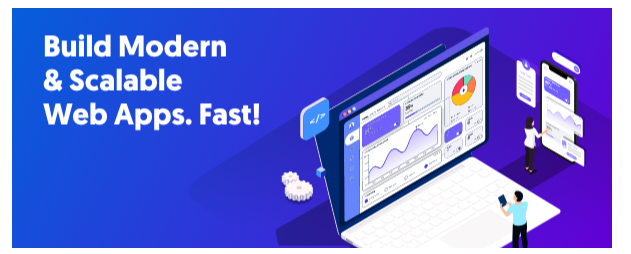Choosing the Right Low-Code Software for Your Business
Organizations in the quick universe of big business application improvement are continuously searching for better approaches to accelerate their advanced change plans. One such strategy, which has become very well known, is utilizing low-code stages.
With these stages, firms can make and send off applications quickly and with a limited quantity of hand-coding. In any case, choosing the best low-code programming from a large number of decisions presented in the market might end up being very overpowering for your business. In this broad article, we will investigate a portion of the things that you want to consider while picking a low-code stage for big business application improvement.
Understanding Enterprise Application Development
First, there is the need to understand what entails this landscape of enterprise application development before going into details about low-code platforms. These are software solutions that are built to meet the complex needs of large organizations.
They often require integration with existing systems, manipulation of huge amounts of as support for a large number of concurrent users. By and large, it has always taken time and resources for any firm to develop its own commercial software from scratch.
The Rise of Low-Code Platforms
Low-code platforms have stood out as a disruptive force in the domain of enterprise application development practices. Such platforms enable organizations to build custom applications using visual interfaces and pre-built components, thereby drastically reducing time and effort in development. With low code platforms, business people who may not know how to code can participate in the process, facilitating collaboration between IT teams and business units.
Key Features to Look for in a Low-Code Platform
Consideration of the following factors is vital when evaluating low-code software for enterprise application development:
1. Visual Development Environment
Developers can make and personalize applications visually through a user-friendly interface with drag-and-drop functionality. It is advisable to seek out platforms that have many templates and components that are in-built to speed up development.
2. Integration Capabilities
Various software systems and databases constitute the typical ecosystem used by enterprises. Seamless integration of low-code platforms with existing business systems like CRM, ERP, and legacy apps, among others, should be guaranteed.
3. Scalability and Performance: The more complex an enterprise application becomes, the more it influences consumers, and so scalability and performance become increasingly necessary. Guarantee that the low-code platform can handle vast amounts of data as well as user concurrency without compromising performance.
4. Security and Compliance: Generally, sensitive information is often handled by enterprise applications, which must also conform to industry standards on regulation or privacy concerns. When selecting a low-code, consider ones that come with safety features such as role-based access control (RBAC), encryption of data, compliance certifications, etc.
5. Customization and Extensibility: Despite the availability of various built-in tools on low-code platforms, there may be a need to customize some applications or extend them for use in certain industries
6. Support and Training: Adopting a new low-code platform requires proper training and support to ensure successful implementation. Evaluate the vendor’s support offerings, including documentation, training materials, and access to technical support resources.
Top Low-Code Platforms for Enterprise Application Development
A few low-code stages have become well known for their powerful elements and flexibility in big business application improvement:
1. Alterative Systems: Its rich elements and business-class capacities make it a top-of-the-line low-code stage with visual improvement devices and built-in man-made intelligence that permits associations to make, send, and oversee modern applications effortlessly.
2. Revise: This offers a compelling stage through which its clients can scale advancement. It empowers cross-practical groups to quickly model, create, and send applications that drive business esteem by zeroing in on joint effort and spryness.
3. Pathway Platforms: Consolidating low-code improvement with process computerization and man-made intelligence speeds up computerized change drives involving a bound-together stage to construct clever mechanization arrangements as well as smooth out work processes, enhance processes, and further develop decision-production at the association level.
4. Revamp Utilities: Revamp Utilities offer a low-code climate for building custom business applications. They are incorporated into Application development biological system of efficiency apparatuses and cloud administrations, empowering consistent joining as well as versatility for big business applications.
Conclusion
Picking the right low-code programming for your business is a basic choice that can essentially affect your association’s computerized change venture. By taking into account factors, for example, visual improvement instruments, coordination capacities, versatility, security, and backing, you can choose a low-code stage that meets your endeavor application advancement needs. Whether you pick industry pioneers like alterative Systems and revise or investigate contributions from various resources into the right low-code stage can drive advancement, readiness, and seriousness in the present unique business scene.


